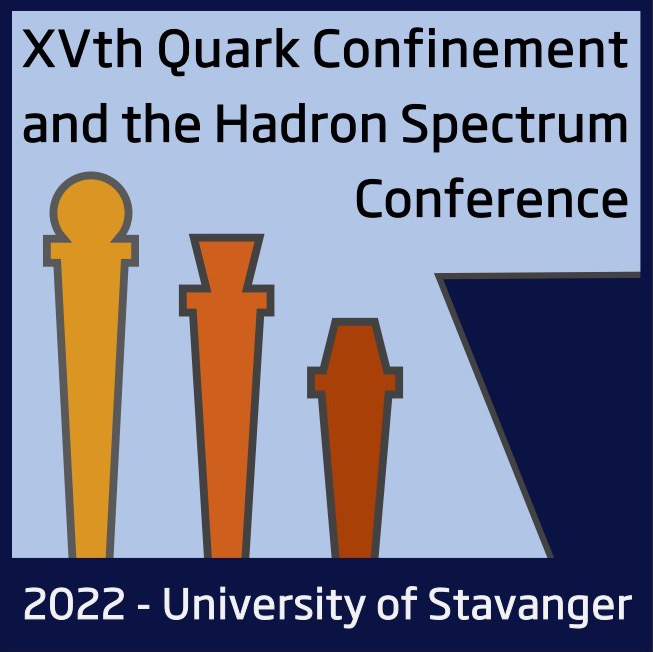Speaker
Description
Observation of the scalar glueball, evidence for the tensor glueball, how to search for the pseudoscalar glueball
The scalar glueball is observed in a coupled-channel analysis of the $S$-wave amplitude from BESIII data on radiative $J/\psi$ decays and further data. Ten scalar isoscalar resonances were required to fit the data. Five of them were interpreted as mainly singlet, five as mainly octet resonances in SU(3). The yield of resonances showed a striking peak with properties expected from a scalar glueball:
$\bullet$ $G_0(1865)$ is produced abundantly in radiative $J/\psi$ decays above a very low background. Its mass is $1\sigma$ compatible with the mass calculated in unquenched lattice QCD and the yield is $1.6\sigma$ compatible with the yield calculated in lattice QCD
$\bullet$ The decay analysis of the scalar isoscalar mesons shows that the assignment of mesons to mainly-octet and mainly-singlet states is correct. Even the production of mainly-octet scalar mesons - which should be forbidden in radiative $J/\psi$ decays - peaks at 1865 MeV.
$\bullet$ The decay analysis requires a small glueball content in the flavor wave
function of several scalar resonances.
$\bullet$ The glueball content as a function of the mass shows a peak compatible with the peak in the yield of scalar isoscalar mesons. The sum of the fractional glueball contributions is compatible with one.
$\bullet$ In the reaction $B_s\to J/\psi + K^+K^-$ reported by the LHCb collaboration, a primary $s\bar s$ couples to mesons having a strong coupling to $K^+K^-$.Two peaks in the $K^+K^-$ mass spectrum are seen due to $\phi(1020)$ and $f_2'(1525)$ , but there is no sign for the $f_0(1710)$ which is known to couple strongly to $K\bar K$. High-mass scalar mesons are strongly produced by two initial-state gluons but not by an $s\bar s$ pair in the initial state. They must have sizable glueball fractions!
The $D$ wave amplitude in the BESIII data on radiative $J/\psi$ decays reveales a high-mass structure which can be described by a single Breit-Wigner or by the sum of three $\phi\phi$ resonances interpreted as tensor glueballs a long time ago. The structure - and further tensor resonances observed in radiative $J/\psi$ decays - are tentatively interpreted as tensor glueball.
In $J/\psi$ decays into $\gamma\pi^0\eta\eta'$ several resonances are reported. The possibility is discussed that the pseudoscalar glueball might be hidden in these data.

